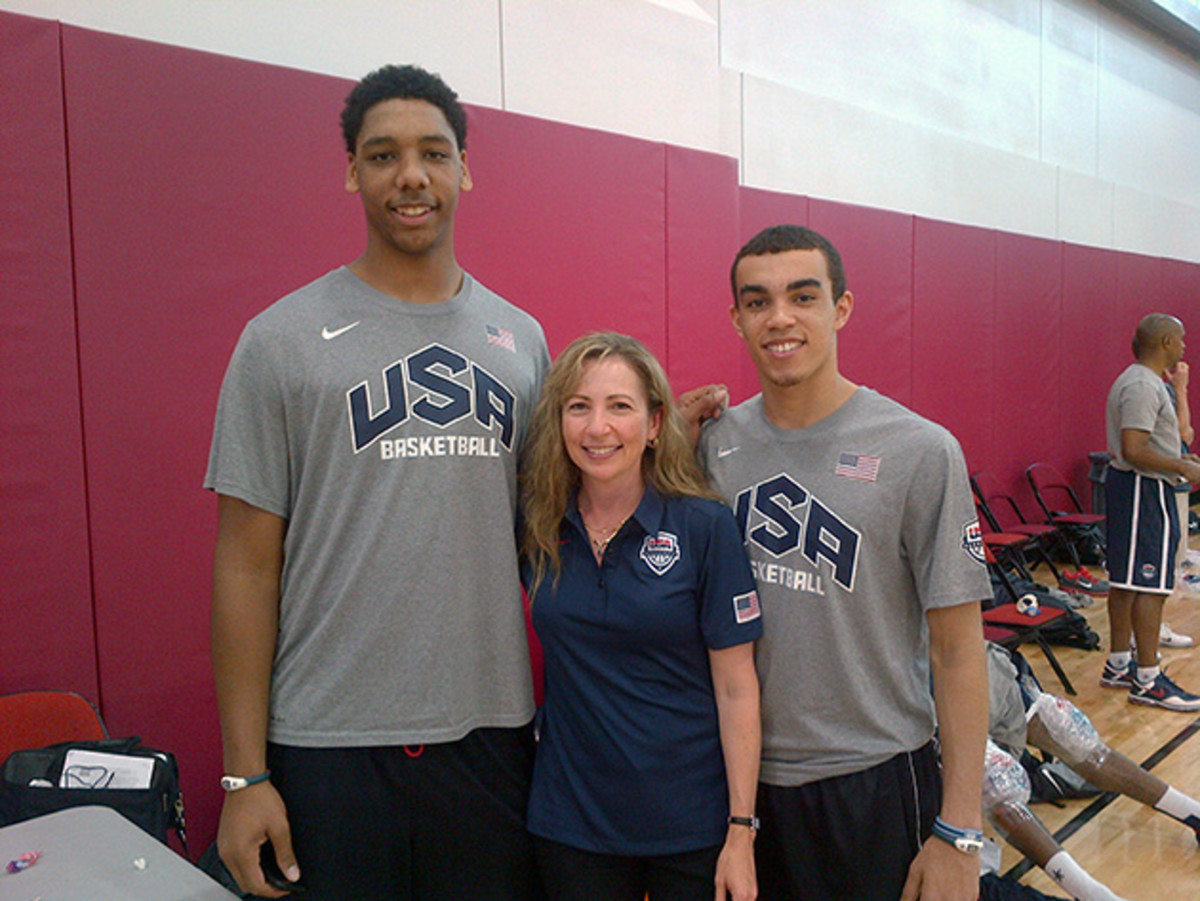One female physician's experience in a man's world of pro sports medicine

One of the most interesting stories in pro sports over the last couple of years has been the hiring of Becky Hammon as an assistant coach by the San Antonio Spurs. Men coaching high-level women are nothing new but with a few exceptions, in such sports as swimming, it is unusual for elite men to be coached by women.
When it comes to sports medicine providers, and especially to the orthopedic surgeons who take care of elite athletes, it has mostly been a men’s game as well. This is changing, however, and my Mayo Clinic colleague Dr. Diane Dahm is caring for the Minnesota Twins and the Minnesota Timberwolves. Dr. Dahm is a professor of orthopedic surgery and has published numerous research papers in medical journals that have advanced the field of sports medicine. Last month we exchanged questions and answers via e-mail and then followed up with a visit as I learned more what it was like to be a medical Becky Hammon.
Michael Joyner:How many women are team doctors for major league men’s teams?
Dr. Diane Dahm: Pro teams generally have both an orthopedic surgeon and a primary care physician taking care of them. Although I am the only female head orthopedic surgeon in the NBA, there are two outstanding female primary care physicians: Lisa Callahan [NY Knicks] and Kathy Weber [Chicago Bulls]. Kathy and I are somewhat unique in that we are women who work with both NBA and MLB teams. I am also aware of two female physicians caring for teams in the NFL, so I really don’t consider myself a trailblazer. I just feel fortunate to have had the opportunity to be part of this relatively small group.
MJ: When did you get interested in orthopedics and how did you then gravitate to sports medicine?
DD: I became interested in sports medicine at a very early age. I used to attend pro sporting events as a kid with my dad. I knew I wanted to be a doctor, but instead of delivering babies like he did, I wanted to take care of athletes.
Vitamins for Victory: How the Atlanta Hawks prevent common NBA injuries
MJ: When I started med school in the early ’80s, orthopedics was almost all “guys”, and the folks who gravitated towards sports medicine had typically been athletes. It seems to me that the rise of women in sports medicine generally, and orthopedic surgery in specific, tracks Title IX and women participating in sports.
DD: Although it may not have impacted me directly, there is no question that Title IX has led to more girls participating in sports, and many orthopedic and sports medicine physicians are former athletes. My personal sports experience growing up consisted of playing baseball and football in the neighborhood with my older brother and his friends. What I lacked in size and talent I made up for in effort and determination, which is probably why they let me play. I was captain of the softball and basketball teams in high school, but realized fairly quickly that I wasn’t good enough to play at the next level. So in college [Wake Forest] I worked as a student athletic trainer and played intramurals. Now I work out when I can, play a little golf, and watch my kids play sports.
MJ: How has it been interacting with elite pros who are men? Was there an adjustment period for the players or for you? Or was it pretty straight forward?
DD: Over the years I have covered essentially every level of men’s sports—from high school to the pros. As I mentioned, in college I worked football, traveled with men’s soccer, and also taped a few ankles for the basketball team. Incidentally, I was at Wake Forest before Tim Duncan but did occasionally tape the ankles of Muggsy Bogues, who played in the NBA at 5' 3"!
I’ve learned that it’s important to create an atmosphere of mutual respect. Pro athletes have exceptional talent and work extremely hard, much harder than most people realize. I have tremendous respect for them, as well as for the coaches and trainers who work with them. I have also been very lucky to work with two great professional organizations that have cultivated an inclusive environment.

MJ: When I was running for the University of Arizona in the late ’70s, sports orthopedic surgery was in its infancy. It was before widespread use of arthroscopic procedures, there were long periods of immobilization after surgery and very limited use of advanced biomaterials. All of that has changed for the better and elite athletes now make full recoveries from what used to be career-ending injuries. What do you see on the horizon?
DD: Individualized treatment based on patient-specific factors, use of virtual reality in rehabilitation of injuries to mimic game and practice situations, and use of athlete-specific data to monitor workload and fatigue, and hopefully prevent injury.
MJ: What have you learned from the elites that you apply to your regular citizen-athlete patients?
DD: Hard work and dedication to rehabilitation will get you back to sport after injury. A positive attitude also helps.
- MORE EDGE: Fitness debate: Is it true that you can exercise too much?
MJ: Biggest surprise?
DD: Probably how uneventful being a woman in my field actually is. The real surprise will be when a woman is named head coach of a high profile men’s team.
Michael Joyner, is an expert in human performance at the Mayo Clinic, these views are his own. You can follow him on twitter @DrMJoyner
